Three of Japan's Wine Regions You Need to Visit
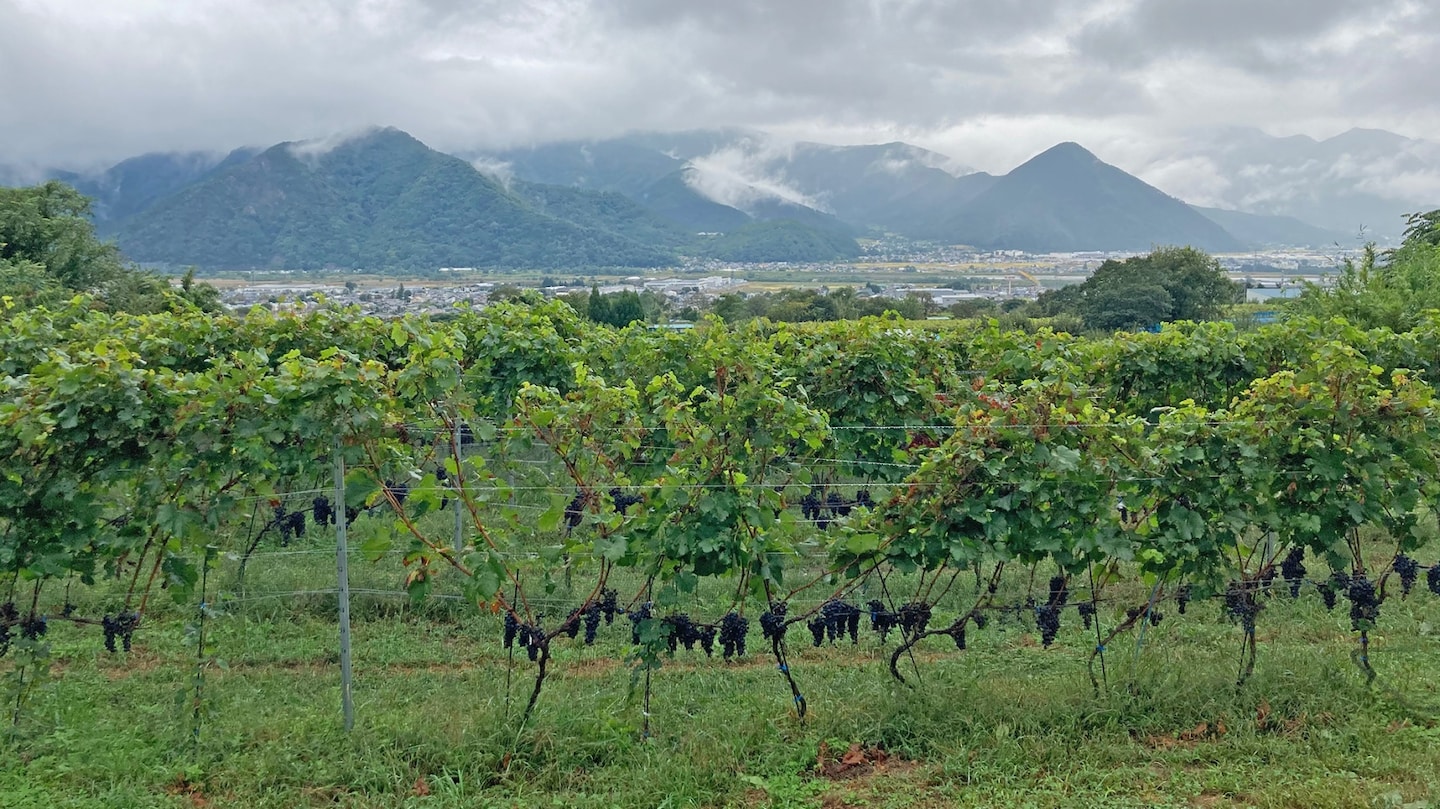
Vineyards overlooking Nagano Prefecture's Chikumagawa Wine Valley. (Photo by Andrew Lee)
With around 350 wineries scattered across Japan, using some of them to craft a travel itinerary is a wonderful way to experience the country. Our wine expert, Andrew Lee leads an exploration of Japan’s three most celebrated wine regions.
I ASSUME YOU ARE THE kind of person whose vacation itinerary is determined by their palate, correct? A wine lover, who relishes discovering a good local wine paired with regional cuisine. Perhaps you even found this article while researching “Japanese Wine Regions” for your trip. (I will also assume you know we’re not talking about sake here.) What you want to know, and what I’m here to enlighten you on, is the best route for your journey into the wine of Japan. So let’s begin with a little history.
Japan’s initial encounter with wine dates back to the mid-16th Century, when Portuguese traders arrived, bringing with them guns, their God, and His “blood.” In the decades following, while Jesuit missionaries were tolerated by authorities, fresh red wine was essential for the sacrament of communion, initiating local winemaking efforts. Unfortunately that all came to an abrupt end when the warlord Toyotomi Hideyoshi crucified 26 Christians, the beginning of a program of persecution that would lead to a ban on Christianity and all its rituals in 1614. Wine production all but vanished, and it wasn’t until the Meiji Restoration, which began in 1868, that Japan's fascination with Western culture ignited a new interest in wine, fueled by the spirited drinking habits of Yokohama’s foreign community.
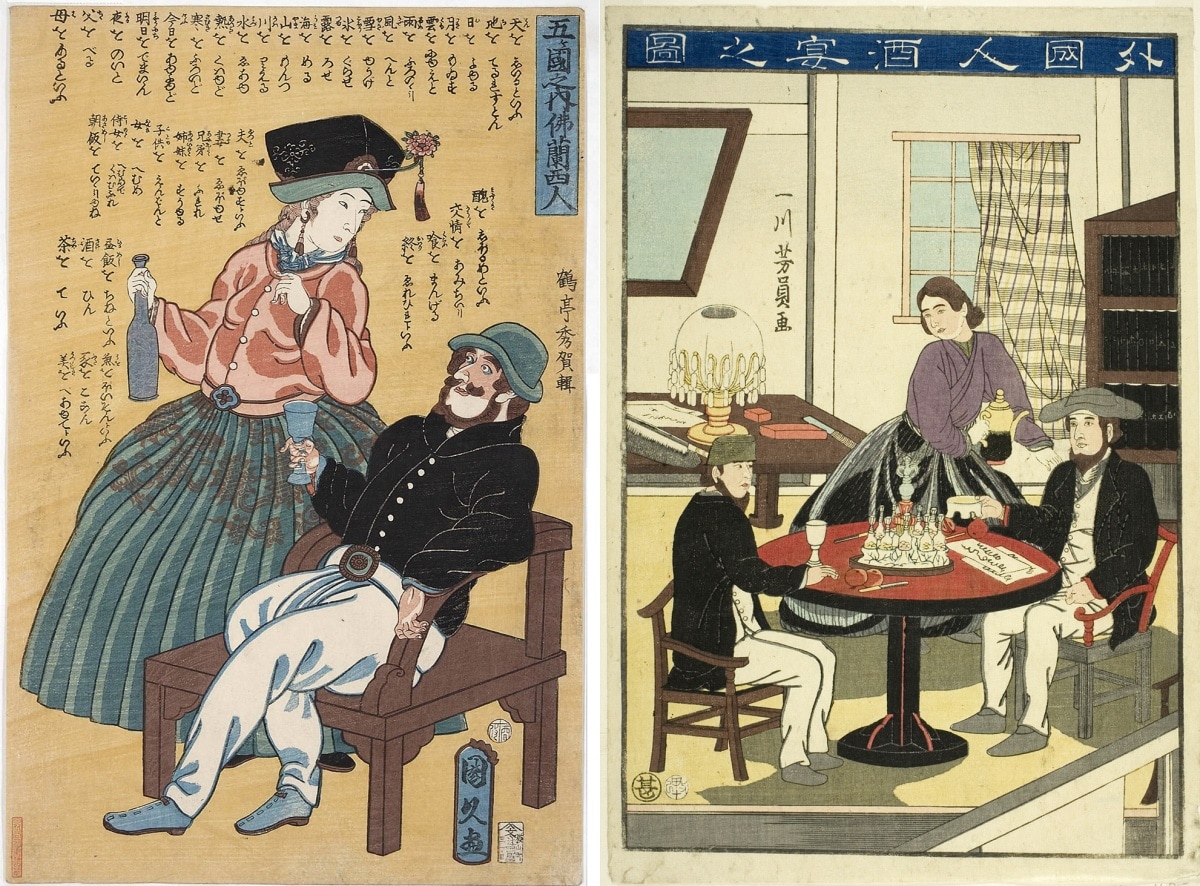
Ukiyo-e woodblock prints showing foreigners drink wine in the Meiji Era (CC0 Public Domain)
The evolution of Japanese wine has mirrored the nation’s remarkable modernization. From modest beginnings, with simple wines made from wild grapes, wine production has grown into a sophisticated and diverse industry. Japan’s distinct terroir, shaped by its varied climate and geography, has allowed for the cultivation of both indigenous and international grape varieties. Today, regions like Yamanashi, Nagano, and Hokkaido are not only producing wines that capture the essence of their local environment but are also gaining recognition on the global stage.
With around 350 wineries now scattered across Japan, crafting a travel itinerary around some of them is a wonderful way to experience the country. Below we will explore three of Japan’s most celebrated wine regions. But first, some important things to note.
Tastings at Japanese wineries usually are not free. The country is known for strict DUI laws; cellar-door staff will ask if you’ve driven. Unlike other countries, designated drivers here don’t even have the choice to spit the wine out.
With that out of the way, let’s try some wine!
YAMANASHI

The vineyards of Katsunuma Winery, Yamanashi. (Photo by Andrew Lee)
Number of wineries: 92
THE FIRST STOP OF OUR JOURNEY simply must be Yamanashi, the birthplace of modern Japanese viticulture.
According to legend, it was here in 718 that the priest Gyoki saw a vision of Yakushi, the Buddha of medicine, holding a bunch of grapes, and had the rather excellent idea to plant some vines—for medicinal purposes only, of course. Today, Daizen-ji, affectionately known as the “Grape Temple,” stands in Katsunuma as a testament to this moment of divine inspiration. The Buddhist monks here still grow grapes and make wine, which visitors can purchase. (What is it about monks and alcohol?) The temple also offers budget accommodation that is kind to both your soul and your wallet.
Despite the ancient history of grapes in the area, it wasn’t until around 1870 that they were used to make wine, when two Yamanashi locals—Hironori Yamada, a priest, and Norihisa Takuma, a merchant—decided to give winemaking a go after seeing foreigners drinking the stuff in Yokohama.
Today you'll find an impressive 92 wineries in Yamanashi, many of which are clustered in Katsunuma, east of Kofu, in the so-called “Koshu Valley,” (encompassing Koshu, Yamanashi, and Fuefuki). As Japan's oldest wine region, Katsunuma hosts the country's most accessible cellar doors, some of which are housed in beautifully preserved wooden buildings, worth visiting for their historical and architectural charm alone. Standouts include the Marufuji Winery, boasting a tasting room reminiscent of the Meiji Era, and the Katsunuma Jyozo Winery, set in a lovely 140-year-old merchant house.
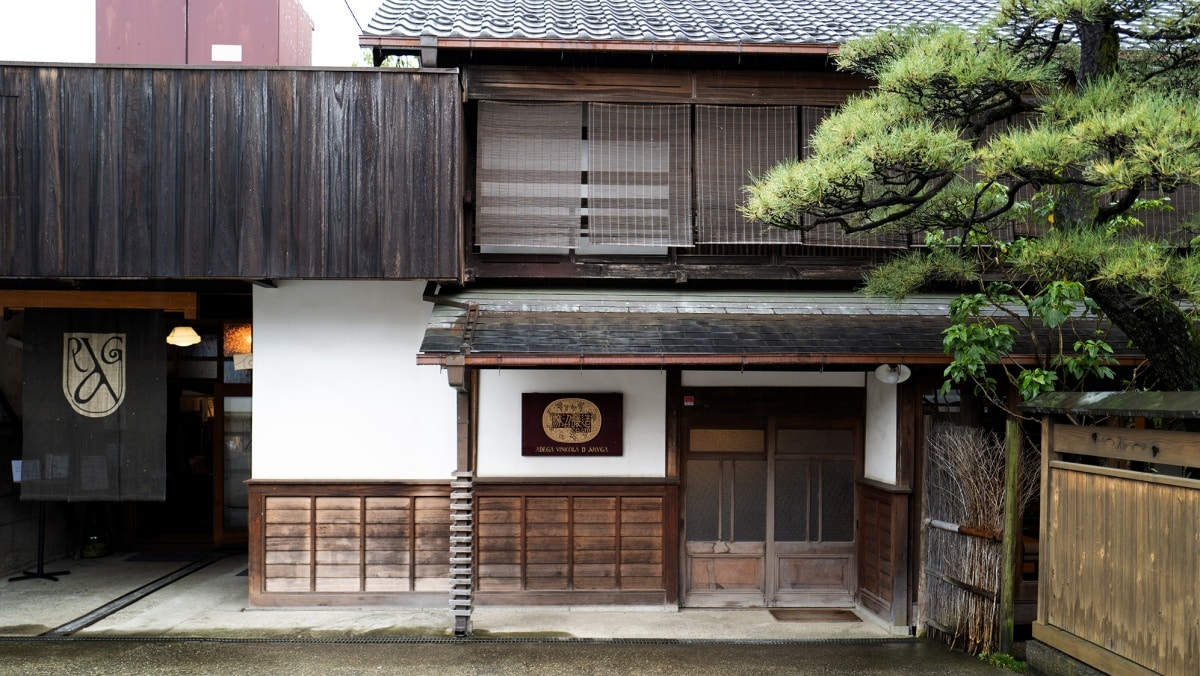
Katsunuma Jyozo Winery, set in a lovely 140-year-old merchant house. (Photo by Andrew Lee)
KATSUNUMA IS DELIGHTFULLY WALKABLE, and late summer, prior to harvest, is the perfect time to visit. As you wander about the wineries you’ll pass vineyards of pergola-trained vines with bunches of grapes wearing quaint wax-paper hats known as budo kasa (grape umbrellas) to protect them from the elements.
The wines you’ll be tasting are made predominantly from Yamanashi’s key varieties: the area’s eponymous Koshu for whites and Muscat Bailey-A for reds. Both are particularly suited to Japan’s humid climate and thrive here, though Koshu is the star.
Considered Japan’s signature variety, wine from pink-skinned Koshu grapes is generally light-bodied and fresh, with a pleasing acidity and citrus notes of yuzu, grapefruit, and lemon. As you would expect, these delicate wines pair brilliantly with sashimi and sushi, but some producers are also experimenting with oak-ageing and skin-contact to craft Koshu wines that can accompany heavier cuisine.
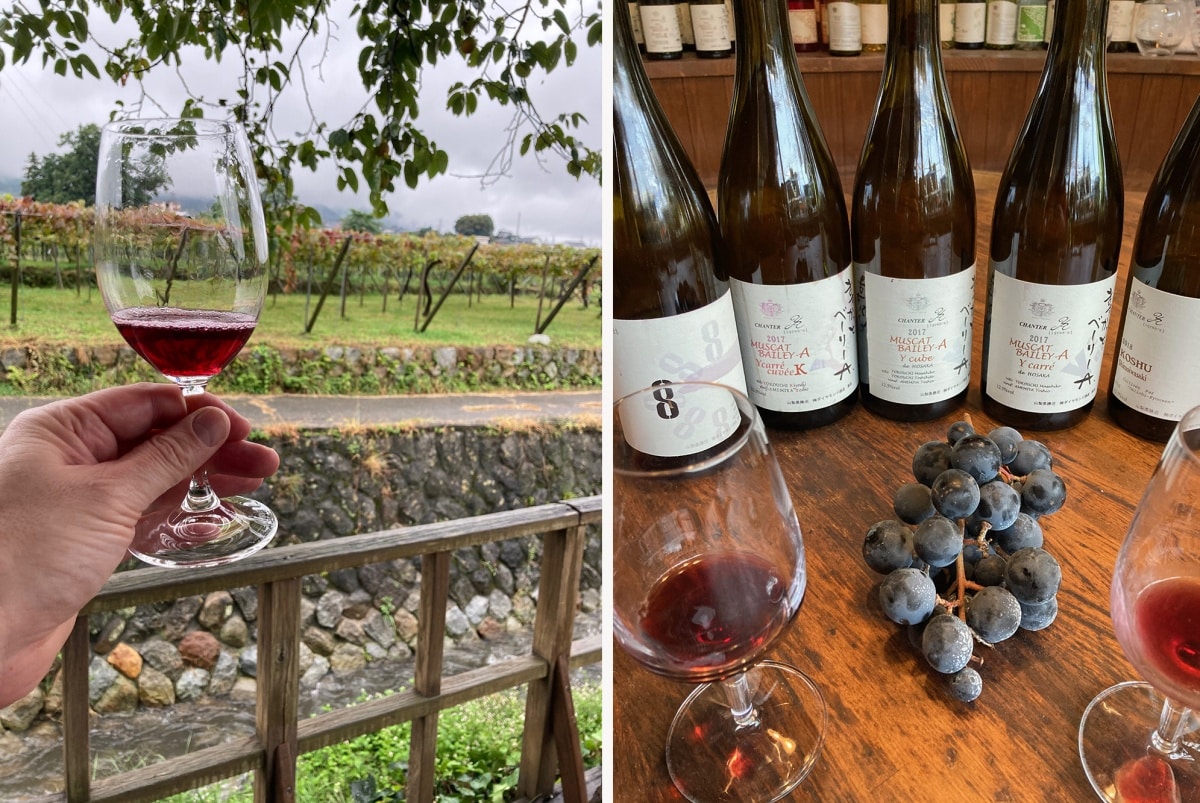
Tasting Muscat Bailey A wine at Katsunuma Winery (left) and Diamond Brewery/Chanter Wines. (Photo by Andrew Lee)
MUSCAT BAILEY-A REDS, light and aromatic with notes of candy-apple, feature moderate acidity and soft tannins. Some time in oak can give these wines a little more depth. Personally, I feel this variety works best in blends, such as the simply named “Japanese Blend” from Enzan Wine in the north of Koshu, which partners it with two other Japanese varieties, Black Queen and Bailey Alicante-A.
While Katsunuma gets all the attention, other emerging areas of Yamanashi are also proving particularly suitable for viticulture, such as Hokuto at the foot of the Yatsugatake Mountains, northwest of Kofu. It is here that two of Japan’s most sought after wineries are located: Domaine Mie Ikeno and L’Atelier Beau Paysage, which both make delicious Chardonnay and Merlot that wine enthusiasts scramble for each year. Unfortunately, such high demand means their wines fetch overly-inflated prices on the secondary market, and they must strictly control who they sell to. As a result, neither winery is open to the public. If you're fortunate enough to find these exclusive wines somewhere, don't hesitate to indulge. I hear a great place to sample them is the Hoshino Resorts Risonare Yatsugatake.
Other recommend Yamanashi wineries:
CHATEAU JUN
KISVIN WINERY
GRACE WINES
KAI WINERY
LUMIERE
KIZAN WINERY
DIAMOND BREWERY/CHANTER WINES
NAGANO

The vineyards of Vino della Gatta Sakaki winery, Nagano. (Photo by Andrew Lee)
Number of wineries: 62
LOCATED JUST OVER THE YATSUGATAKE Mountains from Yamanashi is Nagano Prefecture, Japan’s second-largest wine-producing region.
The first wineries here were established in the early 1900s, in Kikyogahara. But it wasn’t until the 1950s, when Goichi Winery (est. 1911) started cultivating Merlot nearby, that things really got going. In the late 1980s, the region’s reputation for wine further solidified when Chateau Mercian (est. 1949) won international accolades for its Kikyogahara Merlot, and today Nagano is Japan’s biggest producer of Merlot.
In the early 2000s, the Nagano government wisely decided it would be beneficial to promote and protect the region’s distinctive wine production, and in 2013, the expansive Shinshu Wine Valley was defined, including four sub-regions—the Nihon Alps, Chikumagawa, Kikyogahara, and Tenryugawa Wine Valleys. Traditionally known for apples, it is hoped that encouraging wine production in these areas can solve a problem the region faces.
Rural Nagano, like many parts of Japan, is facing a demographic crisis. The region’s ageing population of farmers find themselves increasingly unable to tend their land, a situation made worse by the younger generation's reluctance to follow in their footsteps. This has left once-thriving apple orchards with fruit withering on their branches.

Shinshu Takayama Winery is committed to revitalizing the Nagano region by developing the local wine industry. (Photo by Andrew Lee)
THE ABUNDANCE OF ABANDONED land—often available at minimal or no cost to rent—has sparked interest among urbanites yearning for a quieter life. Among them are wine enthusiasts, keen to try their hand at winemaking. As a result, vineyards now flourish where apple trees once stood.
The area with the highest number of these fledgling wineries is the Chikumagawa Wine Valley, where some of the region’s best wines can be found. A recommended route passes through this picturesque valley from the resort town of Karuizawa, stopping at wineries on the way. Around the town of Tomi, in particular, is a cluster of boutique winemakers worth sampling.
One must-see winery is the gorgeous Villa d’Est Garden Farm and Winery on a hill overlooking the valley. In 1991 at the age of 41, its founder, the writer Tamamura Toyoo, uprooted his life in Tokyo and moved to Tomi to grow Western vegetables and herbs. In 2003, a vineyard was planted beside the farm and Toyoo is now active supporting others who wish to start a winery of their own. Walking in the beautiful garden overlooking the vineyard with a stunning view of the valley below, it’s hard not to be inspired to do the same.
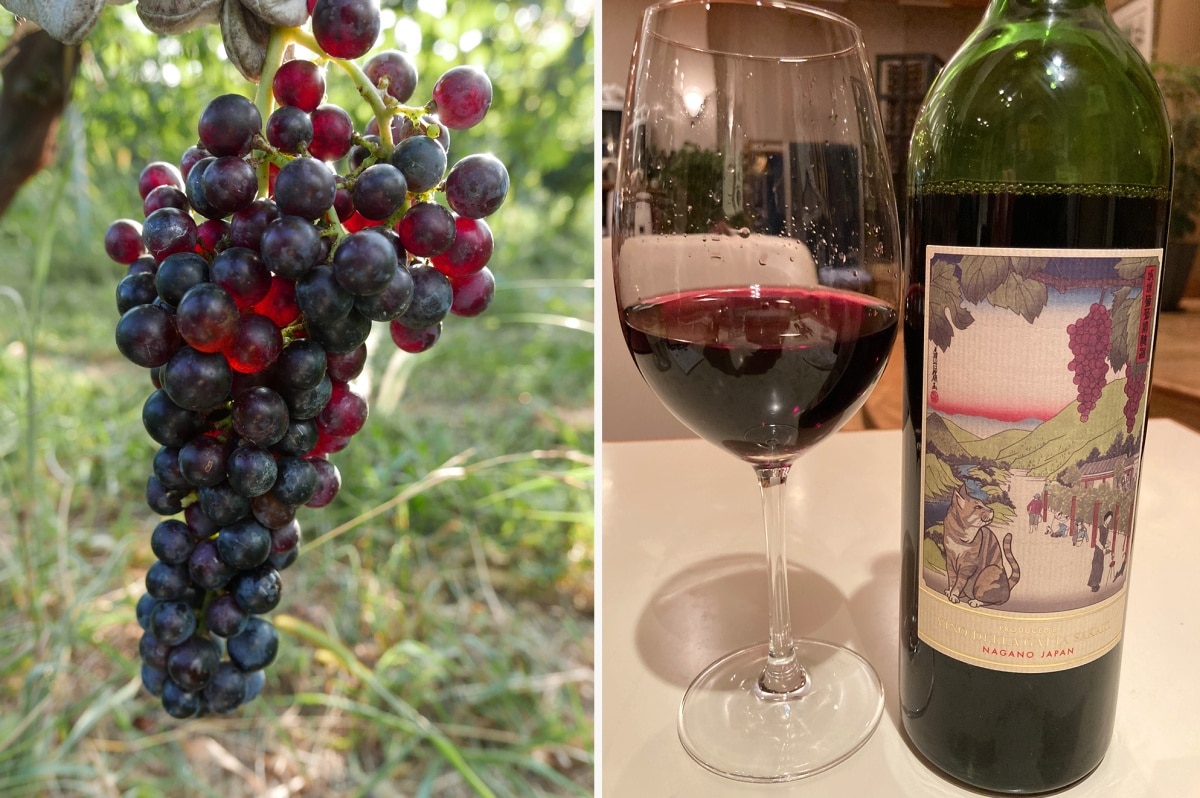
Vino della Gatta Sakaki winery's Nagano Merlot, from harvest to bottle. (Photo by Andrew Lee)
FURTHER ALONG THE VALLEY, I ALSO recommend visiting the Vino della Gatta Sakaki winery and restaurant, owned by the charismatic Atsuto Narusawa, a former sommelier who is heavily involved in the promotion of Nagano wine. The wines he makes with his skilled winemaker Kaori Howard are well worth trying. Especially their excellent “Kuro Tora” (Black Tiger) Merlot.
Finally, three of Nagano’s most in-demand wineries must be mentioned: Terre de Ciel in Komoro, Funky Chateau near Ueda, and most notably, Domaine Sogga of Obuse Winery in the north of Chikumagawa Valley.
Currently in its fourth generation, Obuse Winery (est. 1942) is now run by Akihiko Soga, a pioneer in organic viticulture who, in 2011, was the first winemaker in Japan to gain JAS organic certification for European grape varieties—no easy task in Japan’s humid climate. His commitment to making wine as naturally as possible is evident in his impressive Domaine Sogga range of wines labeled “San Chimie” (without chemicals), made using natural yeasts and without additives.
Interestingly, Akihiko’s brother is the founder of Domaine Takahiko in Hokkaido, where we will head next.
Other recommend Nagano wineries:
Rue de Vin
Shinshu Takayama Winery
Hasumi Farm
HOKKAIDO

Domaine Takahiko's Nana Tsu Mori vineyard in Yoichi, Hokkaido. (Photo by Andrew Lee)
Number of wineries: 48
WITH ITS REPUTATION AS A WINTER escape—especially for the hordes of Aussie snowboarders who’ve turned Niseko into their second home—you’d be forgiven for thinking Hokkaido was too cold to have decent wineries. But you’d be wrong; in fact, it’s not too far from Niseko that the best can be found.
In 2010, there were just two wineries in Yoichi, a small coastal town on the Shakotan Peninsula, about an hour west of Sapporo. Yoichi Wines, had had the place to itself since 1974, while the other was new-kid-on-the-block Domaine Takahiko, founded by Takahiko Soga. Fast forward to today and there are 17 wineries and counting, mostly thanks to the efforts of Soga. It is now the hottest wine-making region in Japan, gaining international acclaim for its wines and setting the standard for the rest of the country.

Two of Yoichi's finest: Domaine Takahiko's Nana Tsu Mori and Domaine Atsushi Suzuki's Cuvée 002. (Photos by Andrew Lee)
SOGA'S PHILOSOPHY IS TO KEEP wine production small, natural, and financially accessible for anyone who wants to give it a go. He regularly takes on apprentices with the provision that they start a winery in the area. As a result, many of the wineries nearby were founded by his students and the town is booming.
Unfortunately, all this attention means demand far exceeds supply for the more famous producers, such as Domaine Takahiko, Domaine Mont and Domaine Atsushi Suzuki, and they don’t sell or offer tastings at their wineries.
It is still worth visiting the town, however, as local bars and restaurants are known to offer these wines by the glass. There is also a viewing area above the Nana Tsu Mori vineyard, source of Domaine Takahiko’s incredible Pinot Noir, that is mecca for any connoisseur of Japanese wine. Oh, and for those of you who prefer something stronger, Yoichi is, of course, the home of Nikka Whisky’s Yoichi Single Malt.
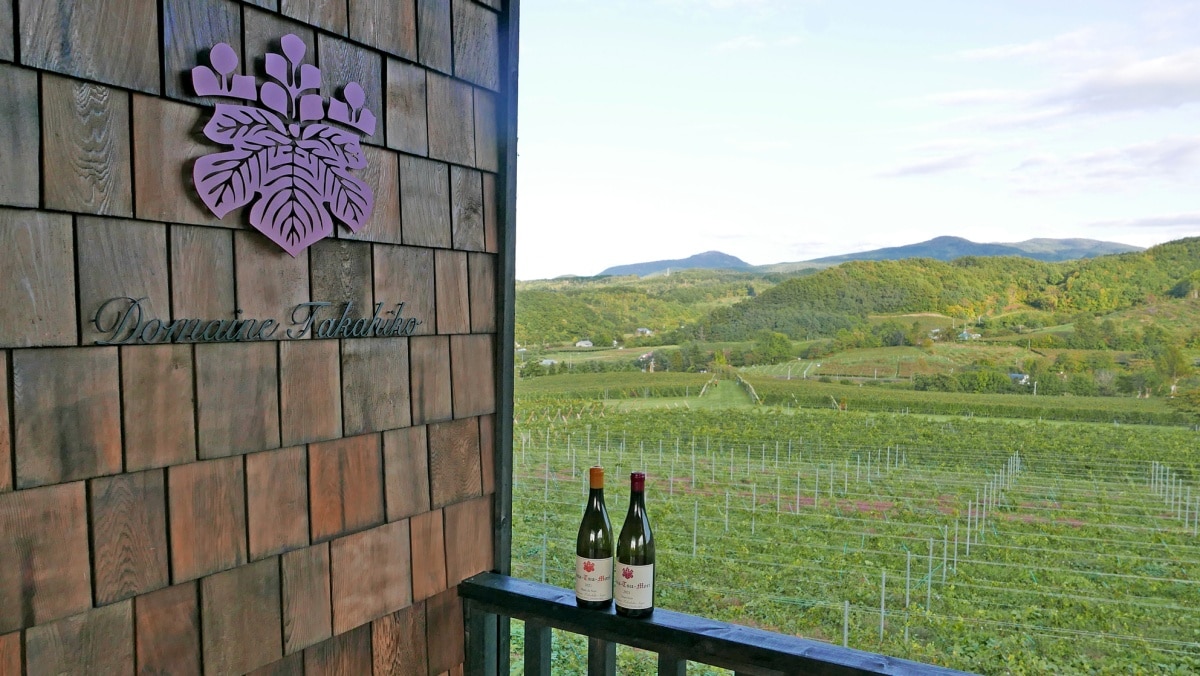
The viewing area above the Nana Tsu Mori vineyard makes for a good photo-op. (Photo b y Andrew Lee)
BEYOND YOICHI, OTHER AREAS of Hokkaido to keep an eye on are Sorachi, north-east of Sapporo, home to the well-known 10R Winery (it is pronounced “toaru”) established by Bruce Gutlove, a legend in the world of Japanese wine; and Hakodate in the south of the island, home to the “de Montille & Hokkaido Project,” the first vineyard in Japan to be planted by a foreign wine producer, the esteemed Domaine de Montille from Burgundy, France. Their first vintage was 2023 and great things are promised. Also look out for wines from boutique natural wineries Nora Kura and Due Punti.
In general, Hokkaido suits cold-hardy European varieties such as Kerner, and Zweigelt, and with the help of global warming it is also becoming known for Pinot Noir and Chardonnay.
Other recommended Hokkaido wineries
Hirakawa Winery
Camel Farm Winery
Domaine Bless (formerly known as Le Reve Winery)
Domaine Ichi



